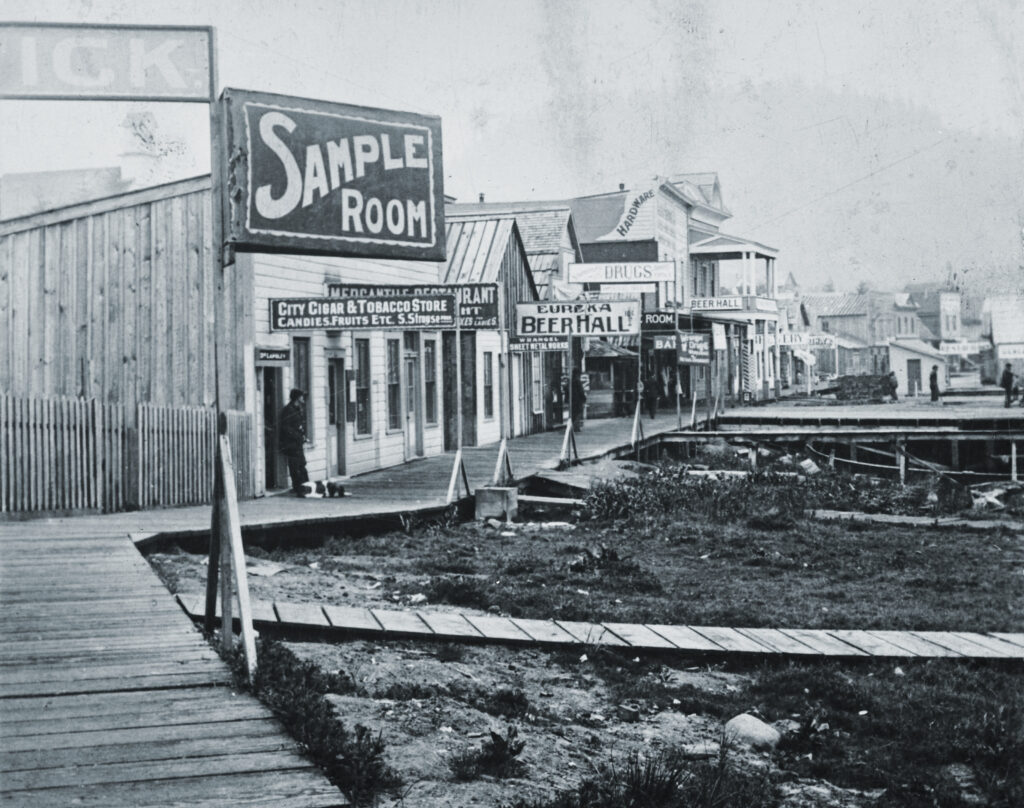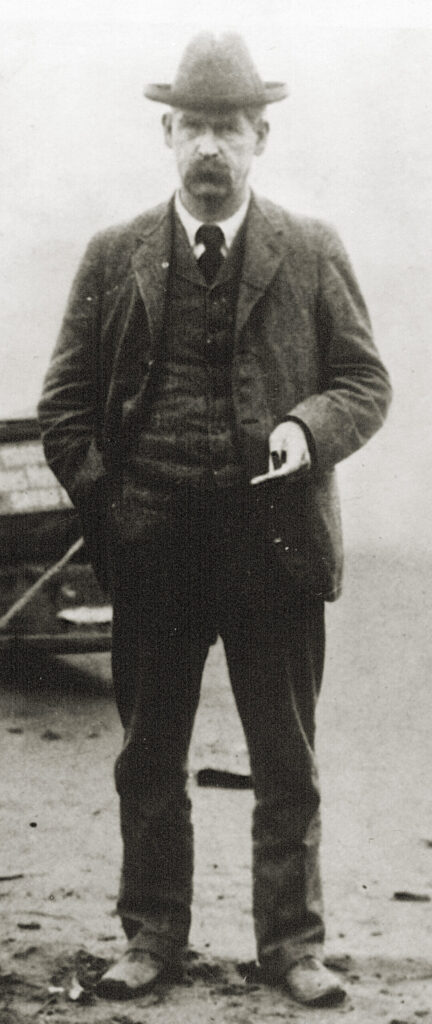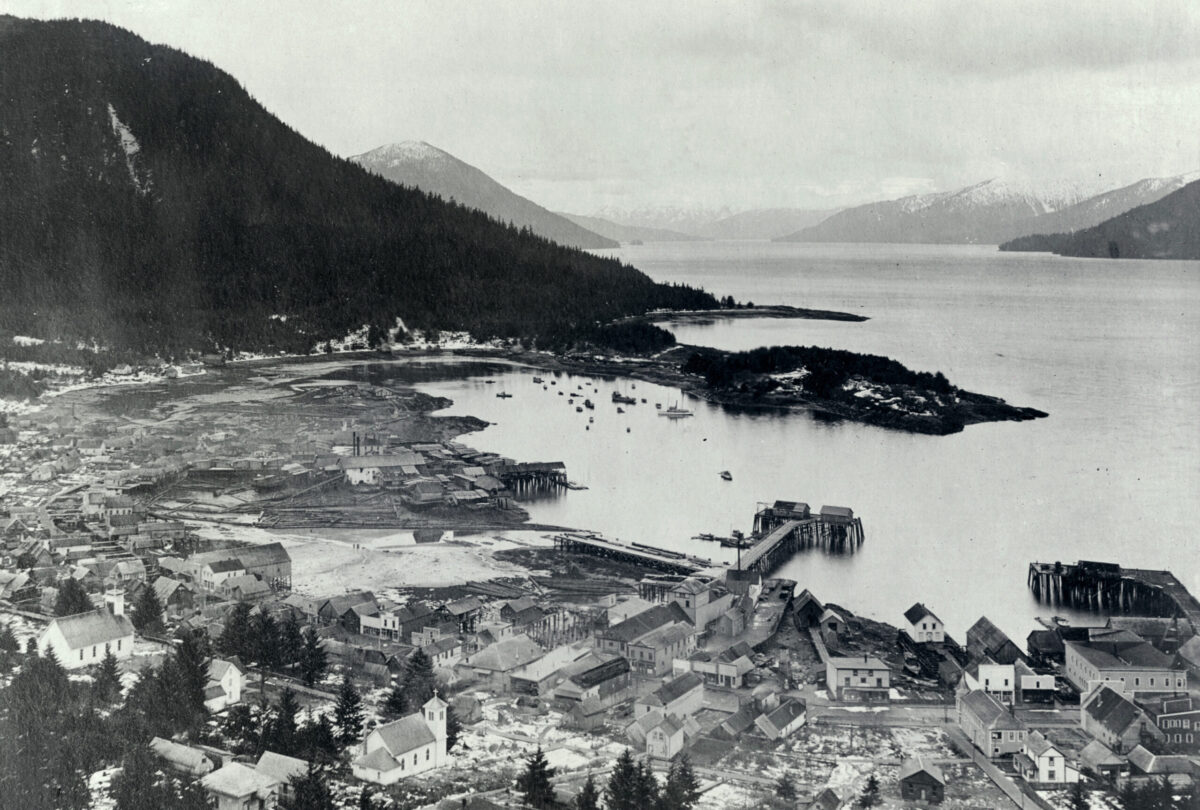At least a half dozen times in his life Wyatt Earp placed himself in harm’s way by pinning a tin star to his lapel. He policed two Kansas cow towns—Wichita and Dodge City—before making headlines in Tombstone, Arizona Territory. Chroniclers also record later stints as a deputy in Kootenai County, Idaho, and Cibola, Ariz. But few recall the time Earp served as a lawman in frontier Alaska amid the Klondike Gold Rush.
By year’s end 1896 Earp had hit a low point. Financial woes had forced him and common-law wife Josephine Sarah Marcus (“Sadie” to Wyatt) to change addresses often in San Francisco, for a time even living with her parents. Then came a break, as he agreed to referee a high-profile heavyweight boxing match between up-and-coming Cornishman Bob Fitzsimmons and brawler Tom Sharkey that December 2. Things went bad from the start. As Earp climbed through the ropes into the ring, he revealed a concealed .45-caliber Colt revolver, which he had to surrender on the spot to a police captain before the crowd of 15,000.
In the eighth round Fitzsimmons landed a devastating uppercut, and Sharkey fell forward rather than backward, receiving what may have been an unintentional blow to the groin from Fitzsimmons. After ordering the fighters to their corners, Earp declared Sharkey the winner, citing Fitzsimmons’ foul. The crowd exploded with anger.
Fitzsimmons’ promoters took the decision to court, the boxer’s attorney claiming Earp had telegraphed friends to bet on Sharkey. Though the judge dismissed the baseless allegation as hearsay, the damage was done. Adding insult to injury, Earp was fined $50 for having carried the concealed pistol into the ring.
His reputation sullied and pockets empty, Earp was desperate for an income. In stepped fate.
On July 14, 1897, the steamship Excelsior docked in San Francisco, disembarking gold-bearing prospectors rife with rumors of a major strike in Canada’s Yukon Territory. Two days later the steamer Portland unloaded “a ton of gold” in Seattle, confirming the rumors. At the time Wyatt and Sadie were in Yuma seeking funds for a mining venture. They sold everything they had for the passage to Alaska.
Within months more than 40 ships sailed for Alaska from San Francisco alone. Many were derelicts scheduled to be broken up in shipyards.
By then Earp himself had become something of a derelict. Pushing 50, he had grown a belly and jowls, and his trademark handlebar mustache had begun to turn gray.
Other Old West derelicts would make their way to the Klondike. Denver con man Jefferson “Soapy” Smith told his cousin, “Alaska is the last West,” before heading north to terrorize Wrangell and Skagway. Serial adventurer Luther “Yellowstone” Kelly ventured to Alaska to map the interior. Lawman Frank Canton, John Clum of Tombstone and Geronimo fame, showman “Arizona Charlie” Meadows, Denver madam Mattie Silks and “Captain Jack” Crawford, the “Poet Scout” of the West, all went north.
Wyatt and Sadie had underestimated their travel costs, given gold rush prices, and were close to going broke as their ship approached Wrangell, Alaska.
Wrangell had always been a wild place. During the gold rush a flotilla of riverboats hauled prospectors and cargo from its port up the Stikine River into the Canadian interior. Town itself comprised a motley collection of 139 cedar plank and log structures. It also held a courthouse, a jail, a customhouse, a sawmill, a brewery, a boardinghouse, a restaurant, a handful of saloons, three stores and a shoemaker’s shop. Rough plank boardwalks kept locals out of the mud under what seemed a constant rain.
Though Soapy Smith made his headquarters up the coast in Skagway, his gang initially held Wrangell in the same grip of terror, demanding a percentage of each saloon’s take and openly robbing and even murdering prospectors along the trails leading to the interior. That Wrangell was the only place in Alaska where dance hall girls performed in the nude spoke volumes about the port.

The U.S. marshal for the District of Alaska was desperately seeking a deputy to temporarily police Wrangell, as the man he’d hired wouldn’t arrive for weeks. The marshal had been keeping law and order as best he could, but eventually he’d have to return to the district capital at Sitka. It must have seemed a godsend, then, when out of the blue none other than Wyatt Earp approached him about the position. Earp considered Wrangell a “hell on wheels” town, worse than Tombstone had been. Still, he needed the money, so he accepted the temporary duty.
Realizing he represented the hated law to a sordid collection of gunmen, prostitutes, pimps, gamblers and thugs, Earp planned to sit things out as quietly as possible until his replacement arrived. That the Smith gang controlled vice in town was to his advantage. He and Bat Masterson had had dealings with Soapy when the three of them were mining the miners in Creede, Colo. How much Earp was counting on that acquaintance in order to survive in Wrangell is unclear. But he knew that as long as he kept his nose out of Soapy’s business, he’d be safe.

Then it happened. One evening a burly town tough got drunk and began shooting up a saloon. Bystanders sent for the pudgy marshal. When Earp arrived and demanded the man surrender his gun, the intoxicated shooter broke into a smile. “I know you!” he exclaimed. “You’re Wyatt Earp!” Twenty years earlier Earp had thrown the man and his drunken cowboy cohorts out of a Dodge City saloon. For the rest of that evening in Wrangell the antagonists stood at the bar reminiscing about the “good old days.”
Though amused by the incident, Earp also recognized it as a close call and a reminder to lay low for the duration of his time in town. Thankfully, within 10 days of Wyatt and Sadie’s arrival his replacement arrived. As soon as the new deputy marshal stepped from the gangplank, the couple caught the first northbound steamer to Juneau. Local wags joked that Wrangell had proved “too wild for Wyatt.”
In Juneau the couple learned Sadie was pregnant, and they decided to return to San Francisco. Better to deliver their child in her parents’ home than on the Alaskan frontier. No sooner had they arrived Stateside, however, than Sadie suffered a miscarriage.
The lure of riches soon drew the couple north to Alaska again. This time they took the “rich man’s route,” sailing up the Yukon River bound for Dawson. But they were iced in for the winter. Come spring, they drifted back downriver and soon headed to the new strike in Nome, where Earp opened the Dexter, the only two-story saloon in the district. So, it was back to mining miners.
When the Earps finally left Alaska, in 1900, they carried $85,000 on them.






